The world’s oceans teem with remarkable avian life, and among the most captivating are the booby birds. Often described as charmingly awkward on land but masterful in the air and underwater, these seabirds offer a fascinating glimpse into evolutionary adaptation and ecological importance. This comprehensive guide delves into the natural history, behavior, and conservation of these intriguing creatures.
What are Booby Birds?
The name “booby” itself originates from the Spanish word “bobo”, meaning “fool” or “clown”. Early sailors observed these birds’ apparent lack of fear and their clumsy movements on land, leading to this somewhat endearing, if inaccurate, moniker. Despite their terrestrial awkwardness, boobies are exceptionally skilled divers and fishers.
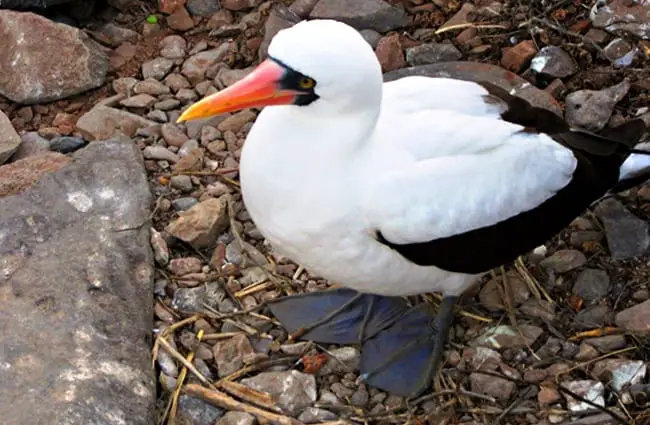
Species Diversity
There are six recognized species of booby birds, each exhibiting unique characteristics:
- Blue‑Footed Booby (Sula nebouxii): Famous for its vibrant blue feet, used in elaborate mating dances.
- Red‑Footed Booby (Sula sula): Distinguished by its red feet, also used in courtship displays.
- Brown Booby (Sula leucogaster): The most widespread species, with a brown body and white belly.
- Nazca Booby (Sula granti): Similar to the Brown Booby, but with a darker brown plumage.
- Peruvian Booby (Sula variegata): Found along the coasts of Peru and Ecuador.
- Masked Booby (Sula dactylatra): Characterized by its dark facial mask and yellow bill.
Habitat and Distribution
Booby birds are primarily found in tropical and subtropical regions of the world’s oceans. Their distribution varies depending on the species. The Brown Booby enjoys the widest range, inhabiting islands and coastal areas of the Atlantic, Pacific, and Indian Oceans. The Blue‑Footed Booby is almost exclusively found along the Pacific coast of the Americas, particularly the Galapagos Islands. Red‑Footed Boobies inhabit tropical islands across the Pacific and Indian Oceans. They generally prefer rocky islands or atolls, where they can establish nesting colonies.
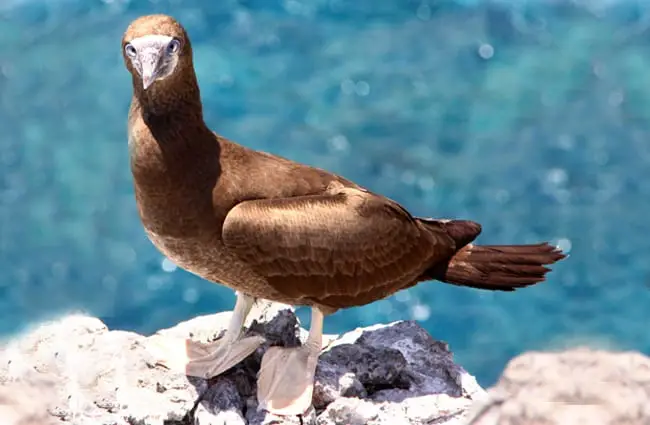
Diet and Hunting Strategies
Booby birds are carnivorous, with a diet consisting primarily of fish. They are skilled plunge divers, soaring high above the water before folding their wings and diving headfirst to catch their prey. They can dive from significant heights, reaching speeds of up to 60 miles per hour. Their streamlined bodies and specialized vision help them locate fish beneath the surface. They often feed in small groups, coordinating their dives to maximize their hunting success. Besides fish, they also consume squid and crustaceans.
Reproduction and Life Cycle
Booby birds are generally monogamous, forming pair bonds that can last for several breeding seasons. Their elaborate courtship rituals are a sight to behold, particularly the foot dance of the Blue‑Footed Booby, where males proudly display their bright blue feet to attract females. They nest in colonies, laying one to three eggs directly on the ground. Both parents incubate the eggs and care for the chicks. Chicks are altricial, meaning they are born helpless and require extensive parental care. They remain dependent on their parents for several months, learning to fish and fend for themselves.

Evolutionary History
Booby birds, along with other members of the Sulidae family, have a rich evolutionary history stretching back millions of years. Fossil evidence suggests that their ancestors were likely more terrestrial birds that gradually adapted to a marine lifestyle. Over time, they developed the streamlined bodies, specialized vision, and plunge‑diving abilities that characterize them today. Their evolutionary success is a testament to the power of natural selection and adaptation.
Ecological Role and Interactions
Booby birds play a crucial role in maintaining the health of marine ecosystems. As predators, they help regulate fish populations. Their guano (droppings) provides essential nutrients for plants and contributes to the productivity of island ecosystems. They also interact with other seabirds, often nesting in mixed colonies. Occasionally, they fall prey to larger predators, such as sharks and marine mammals.
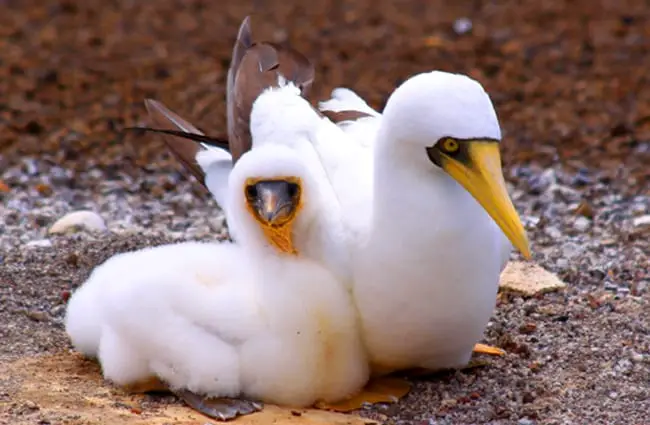
Boobies and Humans
Historically, booby birds were hunted for their eggs and feathers, leading to population declines in some areas. Today, they are protected by law in many countries. However, they still face threats from habitat loss, pollution, and climate change. Plastic pollution poses a significant danger, as birds can ingest plastic debris, mistaking it for food. Climate change is altering ocean temperatures and fish distributions, impacting the birds’ ability to find food.
Observing Boobies in the Wild
For birdwatchers and nature enthusiasts, observing booby birds in their natural habitat is an unforgettable experience. The Galapagos Islands are a prime location for seeing Blue‑Footed Boobies. Red‑Footed Boobies can be found on tropical islands throughout the Pacific and Indian Oceans. When observing booby birds, it’s important to maintain a respectful distance and avoid disturbing their nesting colonies. Binoculars and a telephoto lens can help you get a closer look without causing undue stress to the birds.
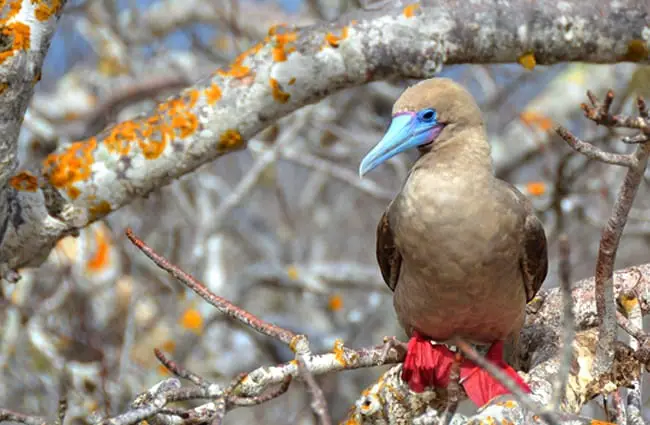
Caring for Boobies in Captivity
Maintaining booby birds in captivity requires specialized knowledge and care. They need large enclosures that mimic their natural habitat, with access to a swimming pool or saltwater tank for diving and swimming. Their diet should consist of fresh fish, supplemented with vitamins and minerals. Enrichment activities, such as providing nesting materials and puzzle feeders, can help stimulate their natural behaviors. Regular veterinary checkups are essential to ensure their health and well-being. It is crucial to remember that booby birds are not domesticated animals and require a high level of care to thrive in captivity.
Interesting Facts
- Booby birds can live for up to 25 years in the wild.
- The color of their feet is influenced by their diet.
- They have a specialized nasal septum that helps them withstand the pressure of deep dives.
- Young booby chicks sometimes engage in sibling rivalry, competing for food from their parents.
- Booby birds play an important role in the cultural traditions of some island communities.

Booby birds are a captivating example of evolutionary adaptation and ecological importance. Their unique characteristics, intriguing behaviors, and vital role in marine ecosystems make them a truly remarkable group of seabirds. By understanding and protecting these magnificent creatures, we can help ensure their survival for generations to come.
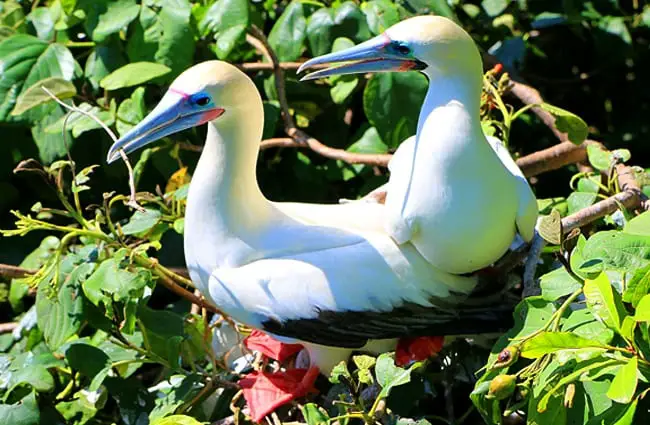

![Red Angus Closeup of a beautiful Red Angus cowPhoto by: U.S. Department of Agriculture [pubic domain]https://creativecommons.org/licenses/by/2.0/](https://animals.net/wp-content/uploads/2020/03/Red-Angus-4-238x178.jpg)




![Red Angus Closeup of a beautiful Red Angus cowPhoto by: U.S. Department of Agriculture [pubic domain]https://creativecommons.org/licenses/by/2.0/](https://animals.net/wp-content/uploads/2020/03/Red-Angus-4-100x75.jpg)

